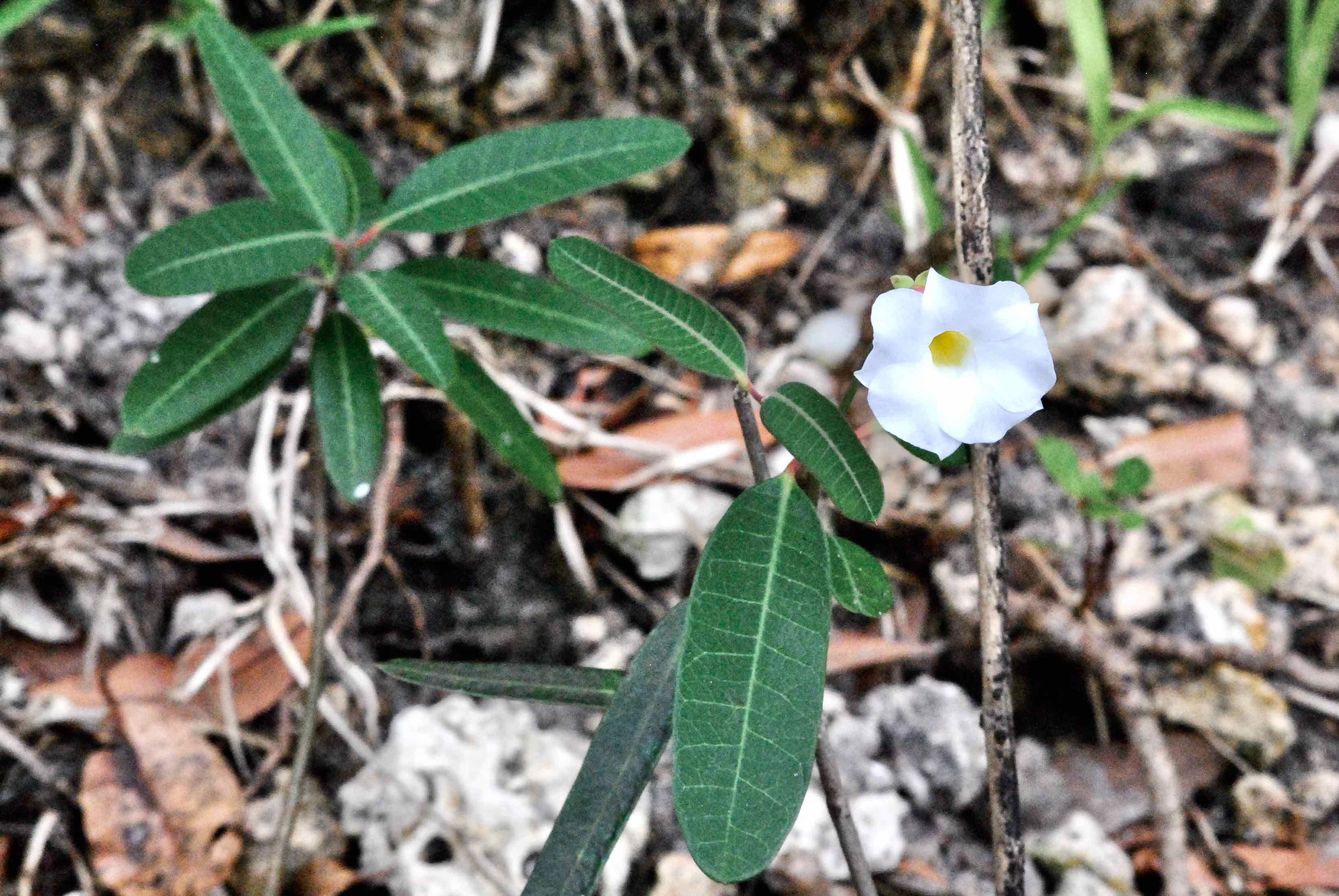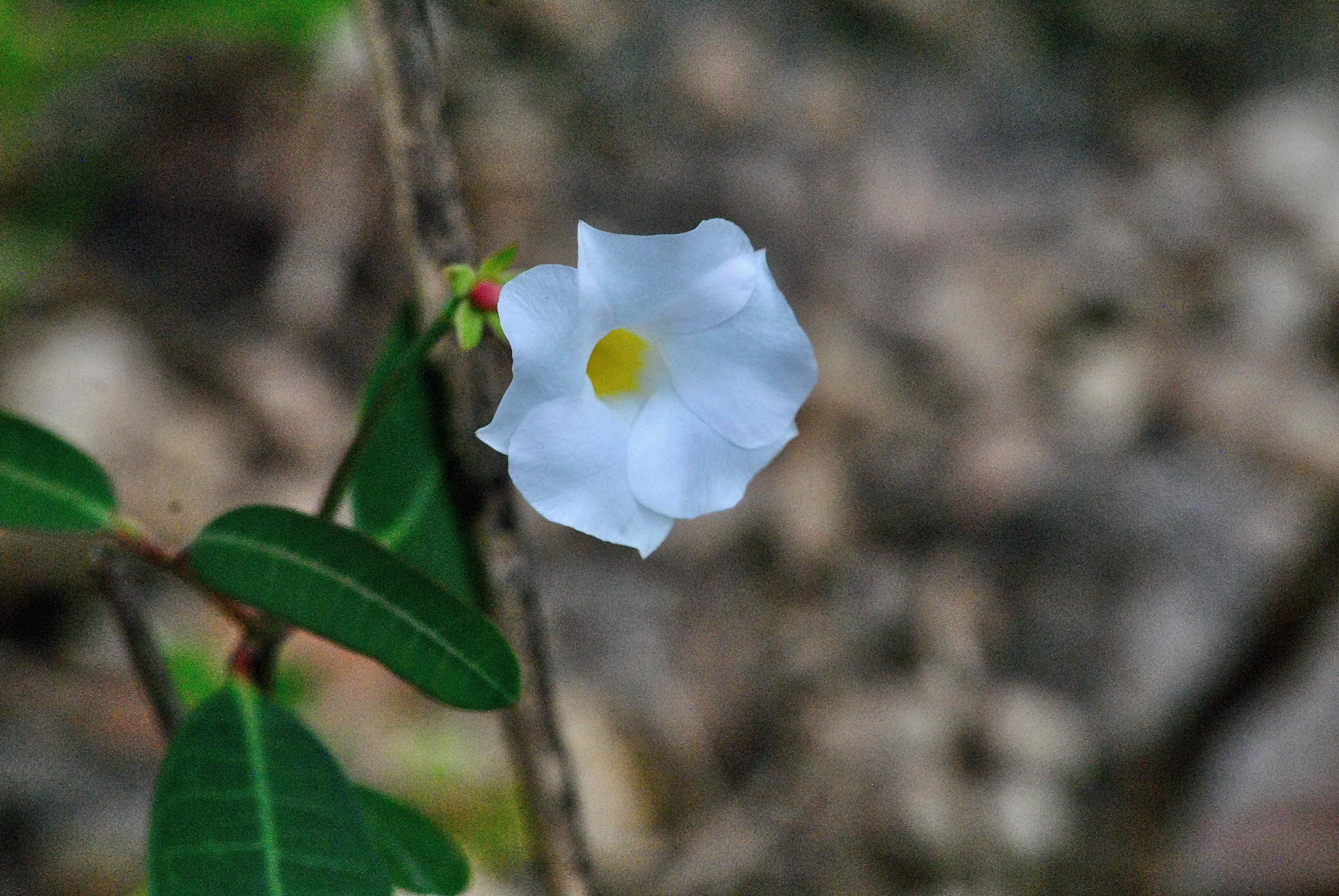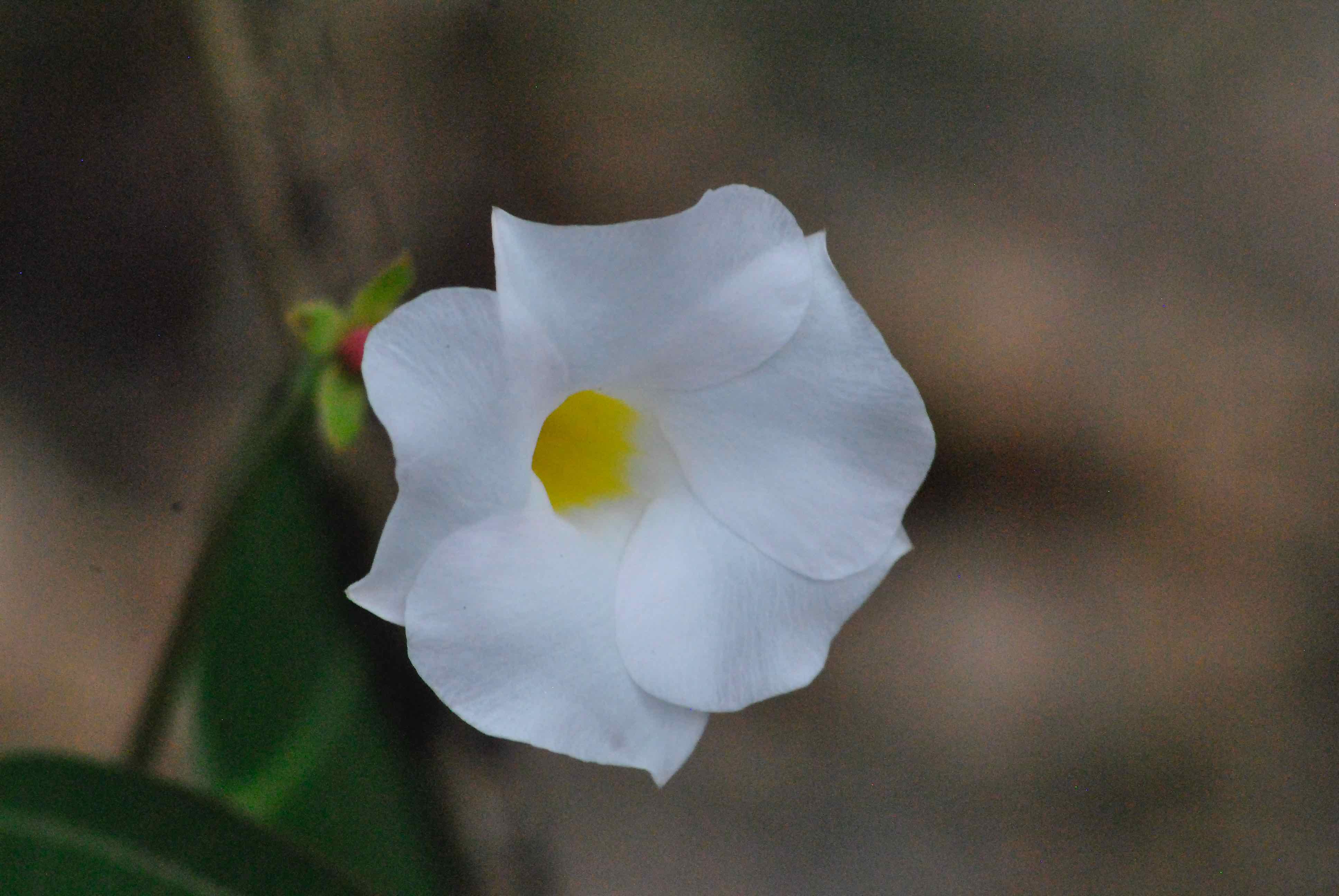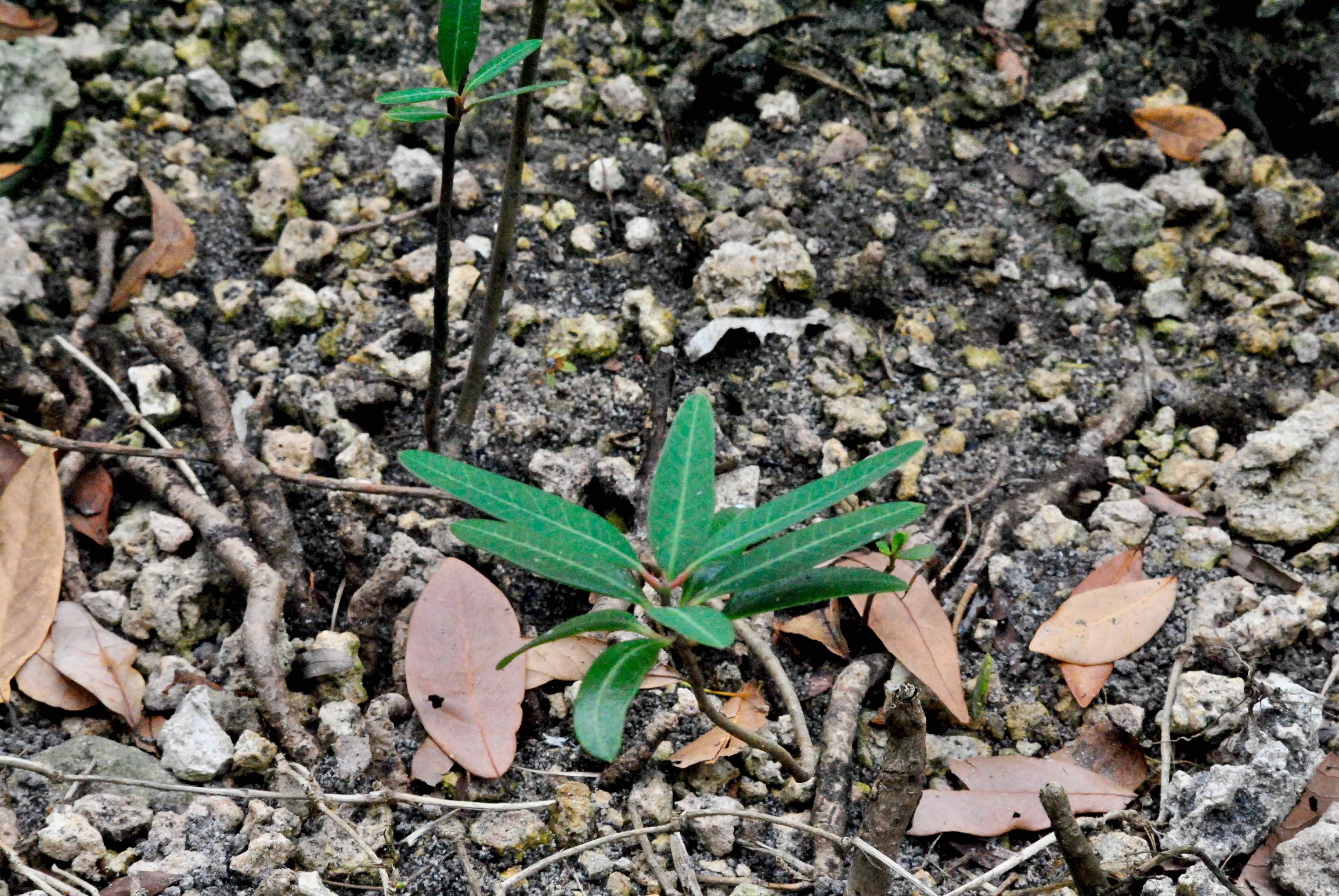
Mangrove rubbervine, photographed at Elaine Gordon Enchanted Forest Park, North Miami, Miami-Dade County, in April 2015.
Mangrove rubbervine, Rhabdadenia biflora, is a bit of an odd name, but makes perfect sense in context. It is a vine, grows mainly in the same habitats as mangroves and oozes a milky latex just like a rubber plant. Mangrove rubbervine.
It is a Florida native, in fact found only in Florida among the 50 states. Its range extends along both Florida coasts between Brevard and Lee counties, skipping St. Lucie and Palm Beach. It's also found throughout the Caribbean, Mexico, Central America and parts of northern South America. It might be locally extinct in places where mangrove forests have been removed.
Mangrove rubbervine has a woody stem that twines on its neighbors. It can be as long as 30 feet, clamboring along the ground until it finds something to grow on.
The leaves are aligned opposition each other along the stem, elongated in shape, with smooth edges and coming to a sharp, short point at the apex. The veining in the leaves is white and prominent. The pointed leaves is one of the key identifers of mangrove rubbervine, but the easiest and most prominent tell are the flowers — large, trumpet-shaped and white with a yellow throat. The flowers sometimes have a pink tinge to them. Mangrove rubbervine blooms year-round but fruits mostly between March and September. The fruit is a pod with hairy seeds that get dispersed by the wind. In Florida, mangrove rubbervine is the host plant for the caicus sphinx moth, Phryxus caicus.
For us humans, mangrove rubbervine is used mostly as a landscaping plant in restorations and natural settings. It grows in full sun to partial shade in soils that are wet to inundated, which limits its utility for most of us. It is salt tolerant, as might be expected given where it grows. When it is cultivated, experts recommend that it be kept trimmed to keep flowers at eye level.
Mangrove rubbervine is used in traditional medicine in some parts of its range. In the Guianas (northeast South America), the leaves and sap are both used to induce vomiting, according to the Smithonian Institute. The leaves are used topically to treat ulcers, and parts of mangrove rubbervine are mixed with other plants to relieve stingray stings.
Other common names include rubbervine (also spelled as two words) and mangrovevine. It is a member of Apocynaceae, which includes dog bane and Madagascar periwinkle.
One footnote: rubbervine is used as the common name for another plant, Cryptostegia madagascariensis, that's also found in Florida as well as tropical places around the globe. It is an invasive pest in many countries; the Florida Exotice Pest Plant Council lists this rubbervine as a Category II invasive, meaning it's in the wild, spreading but has yet to do serious ecological damage. One clear and major identifying difference between our guy and the invasive are the flowers — C. madagascariensis's are reddish and star-shaped.
Click on photo for larger image
Links for Mangrove Rubbervine



